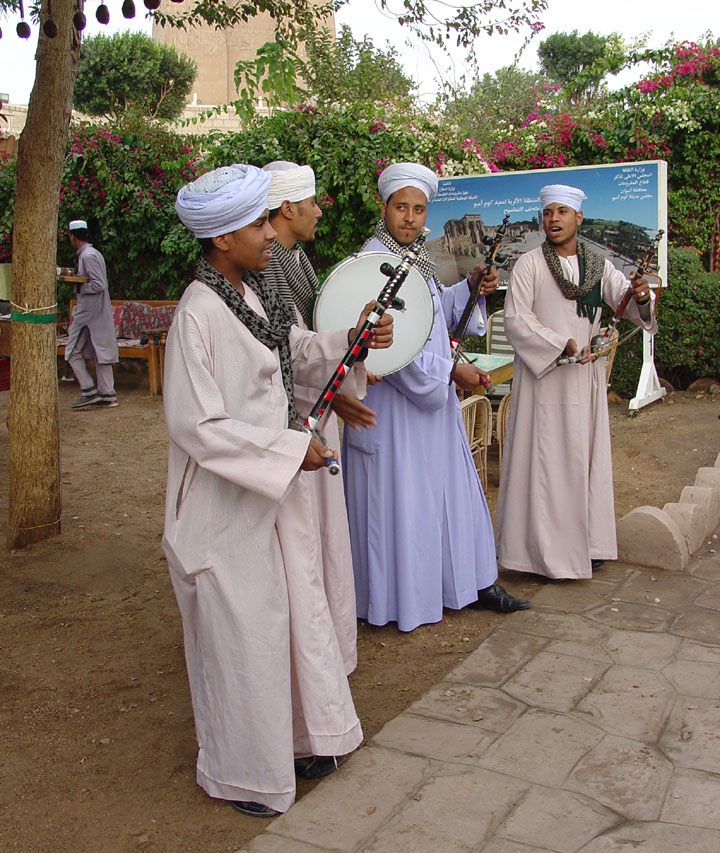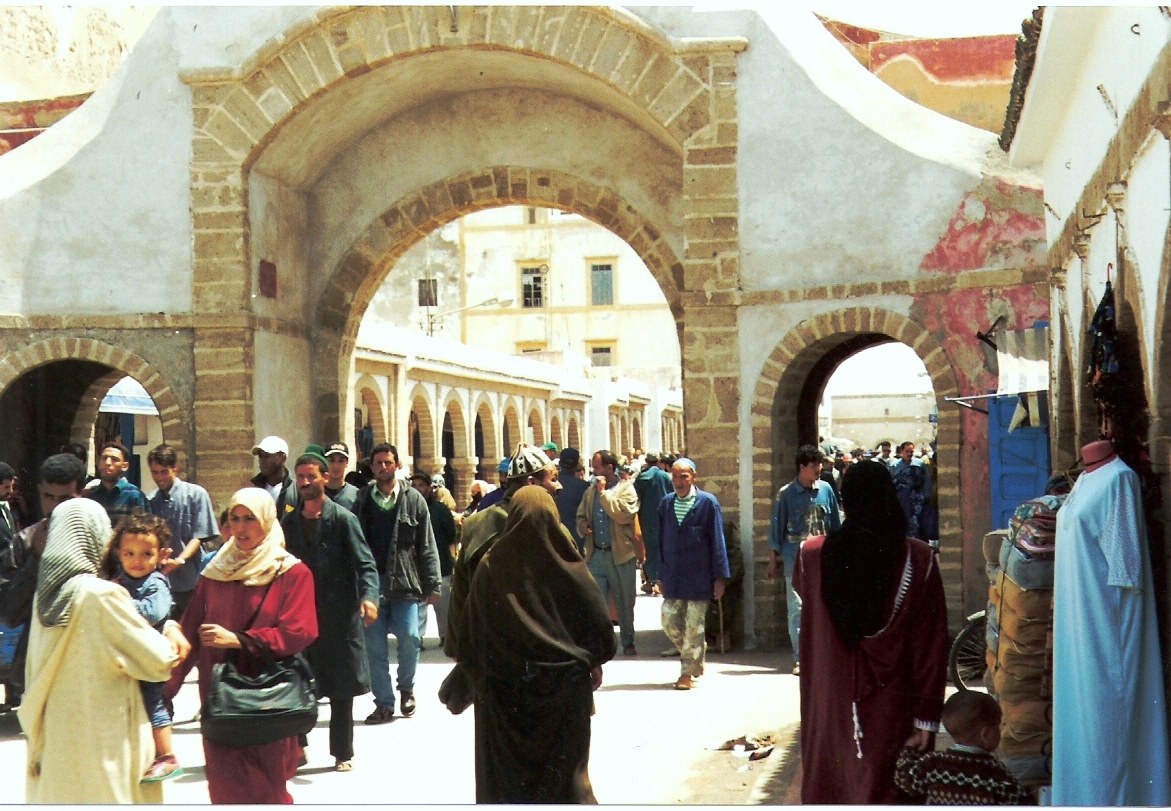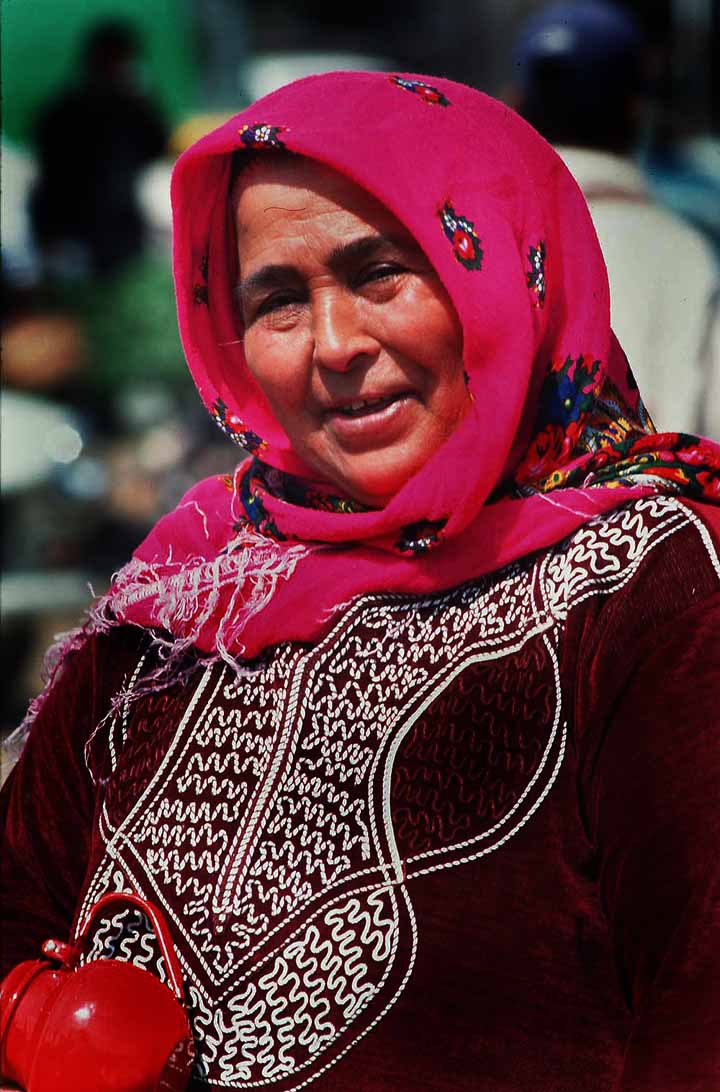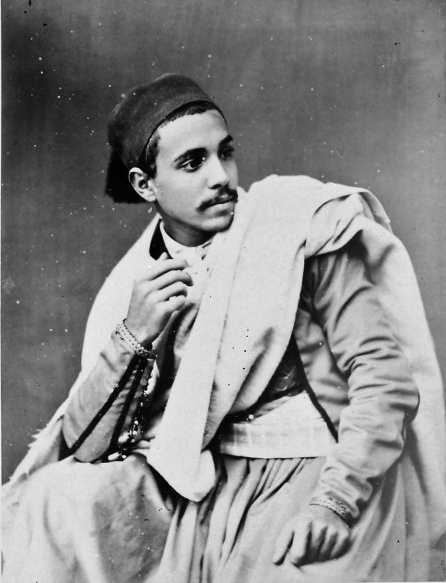|
Jalabiya
The jellabiya, also jalabiya or galabeya ( ar, جلابية / ALA-LC: ', Egyptian slang: Galabyia, ; "jelebeeya" in Ethiopia; "jehllubeeya" in Eritrea) is a loose-fitting, traditional Egyptian garment from the Nile Valley. Today, it is associated with farmers living in the Republic of Egypt (Giza-Cairo, Luxor, and Aswan) and comes in rich color varieties. The garment is also worn in Sudan, but has other textures and is usually white, as well as some communities from Eritrea and Ethiopia. The colorful Egyptian style is used by both men and women. The jellabiya differs from the Arabic thawb, as it has a wider cut, no collar (in some cases, no buttons) and longer, wider sleeves. Versions for farmers have very wide sleeves and sewn-in pockets used to carry tobacco, money, or other small items. Along the Red Sea coast in Egypt, Nubia and Sudan and among Beja tribesmen, the Arabic dishdash is preferred due to the jellabiya's relation to farming. Jellabiya worn in summer are often wh ... [...More Info...] [...Related Items...] OR: [Wikipedia] [Google] [Baidu] |
Sudan
Sudan ( or ; ar, السودان, as-Sūdān, officially the Republic of the Sudan ( ar, جمهورية السودان, link=no, Jumhūriyyat as-Sūdān), is a country in Northeast Africa. It shares borders with the Central African Republic to the southwest, Chad to the west, Egypt to the north, Eritrea to the northeast, Ethiopia to the southeast, Libya to the northwest, South Sudan to the south and the Red Sea. It has a population of 45.70 million people as of 2022 and occupies 1,886,068 square kilometres (728,215 square miles), making it Africa's List of African countries by area, third-largest country by area, and the third-largest by area in the Arab League. It was the largest country by area in Africa and the Arab League until the 2011 South Sudanese independence referendum, secession of South Sudan in 2011, since which both titles have been held by Algeria. Its Capital city, capital is Khartoum and its most populated city is Omdurman (part of the metropolitan area of Khar ... [...More Info...] [...Related Items...] OR: [Wikipedia] [Google] [Baidu] |
Egyptian Musicians
Egyptian describes something of, from, or related to Egypt. Egyptian or Egyptians may refer to: Nations and ethnic groups * Egyptians, a national group in North Africa ** Egyptian culture, a complex and stable culture with thousands of years of recorded history ** Egyptian cuisine, the local culinary traditions of Egypt * Egypt, the modern country in northeastern Africa ** Egyptian Arabic, the language spoken in contemporary Egypt ** A citizen of Egypt; see Demographics of Egypt * Ancient Egypt, a civilization from c. 3200 BC to 343 BC ** Ancient Egyptians, ethnic people of ancient Egypt ** Ancient Egyptian architecture, the architectural structure style ** Ancient Egyptian cuisine, the cuisine of ancient Egypt ** Egyptian language, the oldest known language of Egypt and a branch of the Afroasiatic language family * Copts, the ethnic Egyptian Christian minority ** Coptic language or Coptic Egyptian, the latest stage of the Egyptian language, spoken in Egypt until the 17th centur ... [...More Info...] [...Related Items...] OR: [Wikipedia] [Google] [Baidu] |
Jibba
The ''jibba'' or ''jibbah'' ( ar, جبة, romanized: ''jubbā''), originally referring to an outer garment, cloak or coat,) is a long coat worn by Muslim men. During the Mahdist State in Sudan at the end of the 19th century, it was the garment worn by the followers of the Mahdī ('' Anṣār'', 'helpers'). Muhammad Ahmad proclaimed himself al-Mahdī al-Muntaẓar (the Expected Rightly-guided One), successor of the Prophet Muhammad, in 1881. He exhorted his followers to join a jihad against the Ottoman-Egyptian occupation of Sudan. The Mahdī decreed that all his followers should wear the patched ''jibba'', a version of the ''muraqqa’a'' worn by Sufi mendicants, which symbolises the wearer's commitment to a religious way of life. The ascetic symbolism of the patched garment was appropriate to the Mahdist aim to restore strict Islamic standards to Sudan, which they felt had been corrupted by the appointment of European and American Christians into positions of power by the Ott ... [...More Info...] [...Related Items...] OR: [Wikipedia] [Google] [Baidu] |
Egyptian Clothing
Ancient Egyptian clothes refers to clothing worn in ancient Egypt from the end of the Neolithic period (prior to 3100 BC) to the collapse of the Ptolemaic Kingdom with the death of Cleopatra in 30 BC. Egyptian clothing was filled with a variety of colors. Adorned with precious gems and jewels, the fashions of the ancient Egyptians were made for not only beauty but also comfort. Egyptian fashion was created to keep cool while in the hot desert. Elements of Egyptian clothing In ancient Egypt, linen was by far the most common textile. It helped people to be comfortable in the subtropical heat. Linen is made from the flax plant by spinning the fibers from the stem of the plant. Spinning, weaving and sewing were very important techniques for all Egyptian societies. Plant dyes could be applied to clothing but the clothing was usually left in its natural color. Wool was known, but considered impure. Only the wealthy wore animal fibers that were the object of taboos. They were used o ... [...More Info...] [...Related Items...] OR: [Wikipedia] [Google] [Baidu] |
Egyptian Culture
The culture of Egypt has thousands of years of recorded history. Ancient Egypt was among the earliest civilizations in the world. For millennia, Egypt developed strikingly unique, complex and stable cultures that influenced other cultures of Europe, Africa and the Middle East. Languages Arabic language, Arabic is currently Egypt's official language. It came to Egypt in the 7th century, and it is the formal and official language of the state which is used by the government and newspapers. Meanwhile, the Egyptian Arabic dialect or ''Masri'' is the official spoken language of the people. Of the many varieties of Arabic, the Egyptian dialect is the most widely spoken and the most understood, due to the great influence of Egyptian cinema and the Egyptian media throughout the Arabic-speaking world. Today many foreign students tend to learn it throughout Egyptian music, Egyptian songs and movies, and the dialect is usually labelled by the general public as one of the easiest and faste ... [...More Info...] [...Related Items...] OR: [Wikipedia] [Google] [Baidu] |
Dresses
A dress (also known as a frock or a gown) is a garment traditionally worn by women or girls consisting of a skirt with an attached bodice (or a matching bodice giving the effect of a one-piece garment). It consists of a top piece that covers the torso and hangs down over the legs. A dress can be any one-piece garment containing a skirt of any length, and can be formal or casual. A dress can have sleeves, straps, or be held up with elastic around the chest, leaving the shoulders bare. Dresses also vary in color. The hemlines of dresses vary depending on modesty, weather, fashion or the personal taste of the wearer. Overview Dresses are outer garments made up of a bodice and a skirt and can be made in one or more pieces. Dresses are generally suitable for both formal wear and casual wear in the West for women and girls. Historically, dresses could also include other items of clothing such as corsets, kirtles, partlets, petticoats, smocks, and stomachers. History 11t ... [...More Info...] [...Related Items...] OR: [Wikipedia] [Google] [Baidu] |
Qamis
Shalwar kameez (also salwar kameez and less commonly shalwar qameez) is a traditional combination dress worn by women, and in some regions by men, in South Asia, and Central Asia. ''Shalwars'' are trousers which are atypically wide at the waist but which narrow to a cuffed bottom. They are held up by a drawstring or elastic belt, which causes them to become pleated around the waist. The trousers can be wide and baggy, or they can be cut quite narrow, on the bias. Shalwars have been traditionally worn in a wide region which includes Eastern Europe, West Asia, Central Asia, and South Asia. The ''kameez'' is a long shirt or tunic. The side seams are left open below the waist-line (the opening known as the ''chaak''), which gives the wearer greater freedom of movement. The kameez is usually cut straight and flat; older kameez use traditional cuts; modern kameez are more likely to have European-inspired set-in sleeves. The kameez may have a European-style collar, a Mandarin colla ... [...More Info...] [...Related Items...] OR: [Wikipedia] [Google] [Baidu] |
Thawb
Thawb ( ar, ثَوْب "garment"), also spelled thobe or tobe and known by various other names in different regions, is an ankle-length robe, usually with long sleeves. It is commonly worn in the Arabian Peninsula, the Middle East, North Africa, and other neighbouring Arab countries, and some countries in East and West Africa. Etymology The word ''thawb'' (ثَوْب) is the Arabic word for "garment". It is also romanized as ''thobe'' or ''thaub''. Prevalence and regional differences in names and use by gender Middle East and North Africa The ''thawb'' is commonly worn by men in the Arabian Peninsula. It is normally made of cotton, but heavier materials such as sheep's wool can also be used, especially in colder climates in Iraq and Syria. The style of the thawb varies slightly among the various regions in the area. The sleeves and the collar can be stiffened to give a more formal appearance. Other names may be used for this garment. In Iraq, Kuwait, the Levant, and Oman, ... [...More Info...] [...Related Items...] OR: [Wikipedia] [Google] [Baidu] |
Jilbāb
The term jilbāb or jilbaab ( ar, جِلْبَاب) refers to any long and loose-fit coat or outer garment worn by some Muslim women. Wearers believe that this definition of jilbab fulfills the Quranic choice for a ''hijab''. ''Jilbab'', ''jubbah'' or ''jilaabah'' is also known as ''chador'' by Persian speakers in Iran and Afghanistan. The modern jilbāb covers the entire body. Some women will also cover the hands with gloves and the face along with a niqāb. In recent years, a short visor is often included to protect the face from the tropical sun. Qur'an and hadith The plural of jilbāb, jalabib, is found in the Qur'an, verse 33:59 (Surah Al-Ahzab). A popular translation by Yusuf Ali goes of the transliterated Arabic goes, ''Yā ’ay-yuha n-Nabiy-yu qul li’azwājika wabanātika wa nisā’i l-mu’minīna yudnīna ‘alayhin-na min jalābībihin-na; dhālika adnā an yu’rafna falā yu’dhayn. Wakāna l-lāhu Ghafūra(n) r-Rahīmā(n)'' O Prophet! Tell thy wives an ... [...More Info...] [...Related Items...] OR: [Wikipedia] [Google] [Baidu] |
Hijab
In modern usage, hijab ( ar, حجاب, translit=ḥijāb, ) generally refers to headcoverings worn by Muslim women. Many Muslims believe it is obligatory for every female Muslim who has reached the age of puberty to wear a head covering. While such headcoverings can come in many forms, hijab often specifically refers to a cloth wrapped around the head, neck and chest, covering the hair and neck but leaving the face visible. The term was originally used to denote a partition, a curtain, or was sometimes used for the Islamic rules of modesty. This is the usage in the verses of the Qur'an, in which the term ''hijab'' sometimes refers to a curtain separating visitors to Muhammad's main house from his wives' residential lodgings. This has led some to claim that the mandate of the Qur'an applied only to the wives of Muhammad, and not to the entirety of women. Another interpretation can also refer to the seclusion of women from men in the public sphere, whereas a metaphysical dimens ... [...More Info...] [...Related Items...] OR: [Wikipedia] [Google] [Baidu] |
Djellaba
The djellaba or jillaba (; Arabic: جلابة; Berber: ''aselham''), also written gallabea, is a long, loose-fitting unisex outer robe with full sleeves that is worn in the Maghreb region of North Africa. In central and eastern Algeria it is called ''qeššaba'' or ''qeššabiya''. The mountain dwellers of Morocco call it ''tadjellabit'', which is a Berberized form. Etymology Reinhart Dozy's theory that the Djellaba would have been, originally, the "garment of the Djellab", that is to say of the slave trader, has been rejected by William Marçais who proposed to see in djellaba an alteration of djilbab which, in ancient Arabic, meant draped clothing, although the djellaba is sewn rather than draped. He pointed out that in Oman the form ''gillab'' designates the woman's veil. The disappearance of the first ''b'' would have occurred identically in the Maghreb and Oman. As for the qeššabiya, Georges Séraphin Colin sees in this name the deformation of the Latin ''gausapa'', a te ... [...More Info...] [...Related Items...] OR: [Wikipedia] [Google] [Baidu] |
Burnous
A burnous ( ber, ⴰⴱⵔⵏⵓⵙ ), also burnoose, bournous or barnous, is a long cloak of coarse woollen fabric with a pointed hood, often white in colour, traditionally worn by Berber and other Maghrebi men. In the Maghreb, the colour of the burnous may be white, beige, or dark brown. There are rock engravings near Sigus that attest the existence of the burnous in the ancient times, it was also worn by the Numidians. Historically, the white burnous was worn during important events by men of high positions. Today, men of different social standing may wear it for ceremonial occasions, such as weddings or on religious and national holidays. Burnous in other cultures The burnous became a distinctive part of the uniform of the French Army of Africa's spahi cavalry, recruited in Algeria, Morocco, and Tunisia. It was also sometimes worn unofficially by officers or soldiers of other units in North Africa. The white burnous remains part of the parade uniform of the one remaining ... [...More Info...] [...Related Items...] OR: [Wikipedia] [Google] [Baidu] |


.jpg)






